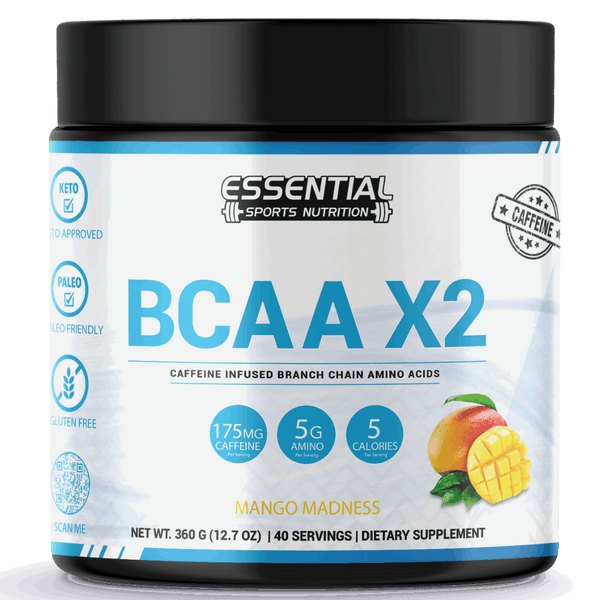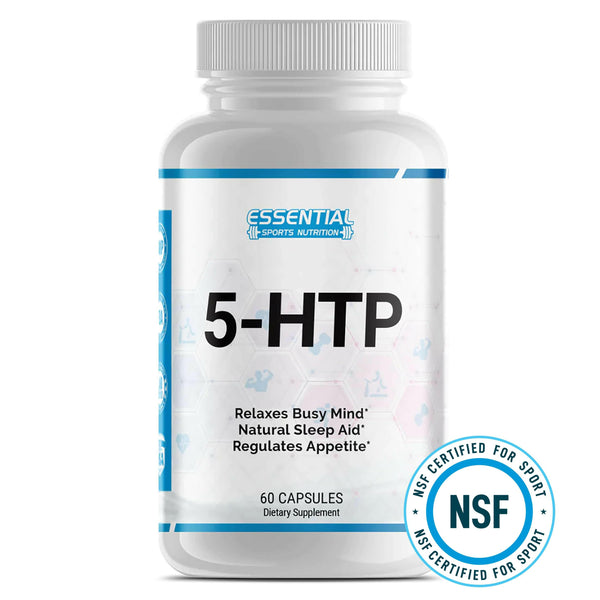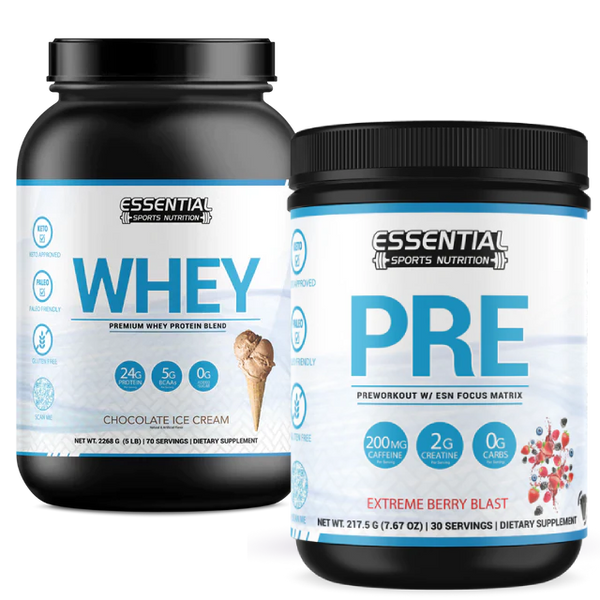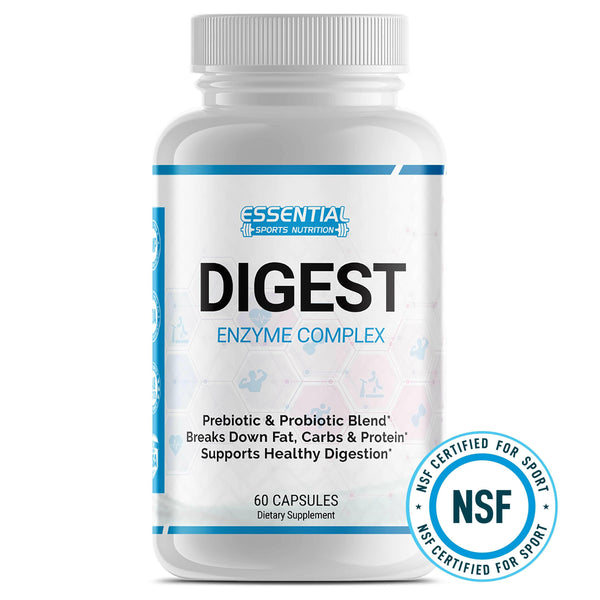Best Calf Workouts and Exercise for Mass
Is there a silver bullet when it comes to bulking up those stubborn calves of yours? You've probably heard the theory that standard calf raises are the key to significant mass, but the truth is a bit more nuanced. As you explore the myriad of exercises tailored to enhance calf size, you'll find that it's a combination of targeting the right muscles, incorporating progressive overload, and paying due attention to recovery that sets the stage for growth. Understanding the finer points of calf anatomy and how it responds to various stimuli is crucial, and you're about to discover why some have succeeded where many have stumbled in the quest for formidable calves. What remains to be seen is whether you've got the dedication to apply these principles and transform your lower legs into pillars of strength.

Key Takeaways
-
The gastrocnemius and soleus muscles are responsible for heel elevation and calf size.
-
Standing calf raises effectively target both the gastrocnemius and soleus muscles.
-
Seated calf raises specifically target the soleus for lower leg thickness.
-
Consistency and gradual overload are important for growth.
Understanding Calf Anatomy

Delving into the calf muscle group, it's essential to recognize that the robust duo of the gastrocnemius and soleus muscles are the key architects of heel elevation in your movements. Your calf muscles, comprising these two powerful muscle groups, work in unison to propel you forward, whether you're sprinting for the finish line or rising onto your toes to reach the top shelf.
The gastrocnemius muscle, the most visible of your lower leg muscles, is a potent force in ankle flexion. It's attached to the Achilles tendon, playing a pivotal role not just in your strides but also in knee flexion, thanks to its connection to the thigh bone. Beneath it, the soleus muscle may be less conspicuous, but don't underestimate its contribution. It's a tireless worker, providing stability and strength for sustained activities.
Both muscles are ripe for Muscle Hypertrophy, the process of building muscle through increased muscle fiber size. Through targeted training and adequate protein synthesis, you can transform your calves into pillars of power. Remember, while genetics may set the stage, your dedication to refining your calf muscles can significantly enhance their mass and definition. Keep pushing; your calves have a tremendous potential for growth.
Essential Calf Exercises
To build formidable calf muscles, you'll need to incorporate key exercises that effectively target both the gastrocnemius and the soleus. Standing calf raises will become your go-to for overall growth, while seated calf raises specifically hone in on the soleus for that lower leg thickness. Stay consistent with these movements, gradually increasing the weight and volume to see your calves balloon with mass.
Standing Calf Raises
While you can opt for a machine or a simple calf block, standing calf raises are a fundamental exercise to forge mass in your calves, ensuring both the gastrocnemius and soleus muscles receive targeted attention for balanced growth.
Here's how to execute them with precision:
-
Stand on the standing calf raise machine or a calf block with your feet shoulder-width apart.
-
Press up onto the balls of your feet, lifting your heels as high as possible.
-
Pause at the top, toes pointed, to feel a stretch and squeeze in your calves.
-
Lower slowly, maintaining a full range of motion, to complete one rep.
A standing calf raise is a good start, but don't stop there. Incorporate sets of calf raises into your routine and witness your calves swell with newfound mass.
Seated Calf Growth
After mastering standing calf raises, it's crucial to target the lower calf muscles with seated calf raises to ensure comprehensive development and mass. Seated calf raises, executed on a seated calf raise machine, are pivotal in your calf workout, especially when dealing with stubborn muscles that challenge your quest for muscle growth. To build big, you can't ignore the importance of resistance training that zeroes in on those lower leg muscle fibers.
Employ a full range of motion and add weight progressively to intensify your sessions. The seated position uniquely isolates the soleus muscle, which requires dedicated attention to grow. Remember, consistency and gradual overload are your allies. Vary your foot placement to hit different angles, and stay motivated; muscle growth is a marathon, not a sprint.
Beginner Calf Workout Plan
Kicking off your journey to building impressive calf muscles, a beginner's workout plan should incorporate exercises like standing calf raises, seated calf raises, and leg press calf raises to effectively target and stimulate growth in both the upper and lower regions of the calves. To carve out those bigger calves you're aiming for, it's essential to focus on calf exercises for mass that challenge your muscles. Here's how to structure your routine:
-
Standing Calf Raise: Start with 3 sets of 12-15 reps. Push through the balls of your feet, elevate those heels, and squeeze at the top. This move targets the larger, upper part of the calves.
-
Seated Calf Raise: Aim for 3 sets of 15 reps with moderate weights. Sit with knees at a 90-degree angle and push up, focusing on the lower legs.
-
Leg Press Calf Raises: Load up the leg press for 3 sets of 12-15 reps. Press one leg at a time if the machine allows, to enhance unilateral strength.
-
Frequency and Progression: Train calves 2-3 times a week, gradually increasing the weight to consistently challenge your muscles.
Intermediate Calf Training Tips
As you progress in your calf-building journey, it's crucial to fine-tune your training frequency for optimal muscle recovery and growth. Embrace the principles of progressive overload by systematically increasing the challenge your calves face, whether it's through more weight, reps, or sets. Focus on the eccentric phase of calf raises, where you lower the weight slowly, to maximize muscle tear and subsequent mass increase.
Optimize Training Frequency
To maximize calf growth, you'll need to tailor your training frequency to your body's unique ability to build muscle in this stubborn area. Consider these steps to optimize your regimen:
-
Assess Recovery: Gauge how quickly your muscle tissue recovers post-workout. This is a critical building block to determine how often you can effectively train your calves.
-
Daily Training: If your calves can handle it, incorporate exercises targeting them daily, as part of a balanced workout routine.
-
Isolation Work: Add specific calf isolation work to ensure all muscle fibers are engaged, promoting comprehensive muscle growth.
-
Rest and Grow: Don't forget the importance of rest periods; they're essential for building bigger, stronger calves.
Stay motivated and remember, tweaking your calf training frequency is a game-changer for those gains!
Progressive Overload Principles
Harnessing the power of progressive overload is crucial for taking your calf development to the next level, ensuring consistent muscle growth by methodically increasing training demands. By gradually upping the weight, sets, or reps, you'll challenge your calf muscles further and catalyze hypertrophy. Mix in both compound and isolation movements, like standing raises or leg press calf exercises, to comprehensively work the lower body. Experiment with foot positions and motion ranges to fully engage the gastrocnemius and soleus.
To truly master the best calf exercises, listen to your body and adjust volume and intensity accordingly. Aim to train your calves frequently but smartly, hitting the desired number of reps without compromising form. This approach will not only sculpt your calves but also increase the production of growth hormones, amplifying your gains. Stick with progressive overload principles, and watch your calves grow.
Eccentric Movement Emphasis
Focusing on eccentric movements, where you emphasize the lowering phase, can significantly boost calf muscle growth by increasing the tension they endure during workouts. Your calves respond exceptionally well to this type of stress, promoting greater mass development. Here's how to incorporate eccentric movement emphasis into your routine:
-
Slow Descent in Raises: When performing standing calf raises, lower your heels back down with a slow, controlled motion, extending the time under tension.
-
Heavier Eccentric Loads: Use a weight that challenges your muscles during the lowering phase more than the lifting phase.
-
Mindful Muscle Engagement: As you lower the weight, focus deeply on the stretch and contraction within your calf muscle.
-
Progressive Overload: Gradually increase the weight over time, ensuring your calves are continually adapting and growing.
Harness these intermediate tips; your dedication will soon be reflected in the mirror.
Advanced Calf Building Strategies

Dive deeper into calf development by customizing your workouts to match your personal goals, genetic predispositions, and recovery capacities. To forge strong calves that stand out, you've got to be strategic. Start by incorporating the best exercises to target various parts of your calves. Standing calf raises are quintessential for building muscle in your gastrocnemius, while seated variations focus on the often-neglected soleus.
Embrace progressive overload in your journey to calf growth. Gradually increase the weight and intensity, ensuring you're constantly challenging your muscles. Single-leg calf raises can be a game-changer, allowing you to correct imbalances and maximize focus on each calf.
Remember, it's not just lifting heavy; it's about pushing through the balls of your feet with precision for proper calf muscle engagement. Rotate foot positions to hit different angles, and don't shy away from a full range of motion to stretch and contract those calves thoroughly.
Consistency is your ally in training your calves. Stick to your routine, and push through plateaus with determination. The top exercises for calf development require dedication and a willingness to adapt. Stay motivated, stay consistent, and soon you'll see the mass you're after.
Nutrition and Recovery for Growth

To truly maximize calf gains, you'll need to fuel your body with the right blend of nutrients and prioritize rest for optimal muscle recovery. While hitting the weights hard is critical, the work you do in the kitchen and during downtime is just as vital for deep muscle growth. Remember, even if you're not genetically blessed with good calf musculature, a disciplined approach to nutrition and recovery for growth can help you reach your fitness goals.
Here's a quick guide to ensure your calves are one step closer to that mass you crave:
-
Protein Power: Consume enough protein to repair muscle fibers torn during intense workouts. Aim for at least 1 gram per pound of body weight.
-
Smart Carbohydrates: Fuel your muscles work with complex carbs for sustained energy; they're crucial for rebuilding glycogen stores.
-
Healthy Fats: Don't shy away from fats—they're essential for hormone production and injury prevention.
-
Rest and Repair: Prioritize sleep; according to the Journal of Medicine, lack of sleep hinders muscle growth and recovery.
Staying on top of these four elements will ensure your muscles have what they need to grow and your efforts in the gym don't go to waste.
Stronger Calves FAQs:
Q: What are the best calf exercises for mass?
A: The best calf exercises for mass include seated calf raise, standing calf raise, single-leg calf raise, and calf press on the leg press machine.
Q: How can I build muscle mass for my calves?
A: You can increase the size of your calves by doing calf-strengthening exercises such as calf raises, using the leg press machine, and incorporating plyometric exercises into your workout routine.
Q: What is the anatomy of the calf muscles?
A: The calf muscles are comprised of two main muscles: the gastrocnemius, which is the larger muscle that gives your calves their rounded shape, and the soleus, which lies underneath the gastrocnemius.
Q: Which calf workouts are best for promoting muscle growth?
A: Calf workouts that promote muscle growth include exercises like a seated calf raise, standing calf raise, and using the leg press machine to target the calf muscles effectively.
Q: What are some good calf muscle exercises for mass?
A: Some good calf exercises for mass include seated calf raises, standing calf raises, single-leg calf raises, and calf press on the leg press machine, as they target the calf muscles effectively for muscle growth.
Q: How can I build my calf muscles to respond effectively?
A: You can build your calf muscles effectively by performing exercises like calf raises, using the leg press machine, and incorporating plyometric exercises into your workout routine to stimulate muscle growth in the calves.
Q: What is the best calf workout for mass?
A: The best calf workout for mass typically includes a combination of seated calf raise, standing calf raise, and calf press on the leg press machine, as these exercises effectively target the calf muscles for muscle growth.
Q: What are some effective calf exercises to grow your calves?
A: Effective calf exercises to grow your calves include seated calf raise, standing calf raise, single-leg calf raise, and calf press on the leg press machine, as they specifically target the calf muscles for growth.
Q: How can I train my calves to become bigger and stronger?
A: You can train your calves to become bigger and stronger by incorporating calf-strengthening exercises such as calf raises, using the leg press machine, and performing plyometric exercises to enhance the strength and size of your calf muscles.
Q: Are there specific calf exercises for building mass in the calves?
A: Yes, there are specific calf exercises for building mass in the calves, including seated calf raise, standing calf raise, single-leg calf raises, and calf press on the leg press machine, which targets the calf muscles to promote muscle growth and size.
Other Frequently Asked Questions:
How Can I Add Mass to My Calves?
To bulk up those lower legs, you've got to hit the gym with intent. Incorporate standing and seated calf raises into your routine, and don't shy away from heavy leg presses. Remember, calf growth is stubborn; it demands consistency and progressive overload. Ensure you're also allowing for adequate recovery—muscles grow outside the gym too. Stay patient, stick to your plan, and you'll see those calves start to pop.
What Exercise Makes Your Calves Bigger?
To sculpt towering peaks on your lower legs, visualize powering through standing calf raises, where you press skyward on the balls of your feet, feeling your muscles swell. Seated calf raises will carve out the lower regions, intensifying your gains. Don't forget leg press calf raises, a powerhouse move that demands your calves to work overtime. Stay consistent, push your limits, and watch as your calves expand into formidable pillars of strength.
How Do You Bulk up Skinny Calves?
To bulk up skinny calves, you've got to hit them hard and often. Start with standing and seated calf raises, increasing the weight progressively. Don't forget to throw in leg press calf raises for added intensity. You'll need to push your limits, but ensure you maintain proper form. Mix it up to keep your muscles guessing and growing. Stay consistent, eat right, and you'll see those calves start to swell. Keep at it!
Do Calves Grow When Bulking?
Imagine you're hitting the gym hard, focusing on gaining size. You're probably wondering, do calves grow when bulking? Absolutely, but they're notoriously stubborn. Your success hinges on genetics, nutrition, and how often you challenge them with heavy weights. To bulk up your calves, you'll need to push past comfort zones, progressively overload, and fuel your body right. Get ready to work for those gains; they won't come easy, but they're within your reach.
Building Bigger Calves: Conclusion
You've now got the tools to enhance your calves, with key exercises and strategies tailored from beginner to advanced levels. Remember, consistency is your ally; a study revealed that training calf muscles twice a week can increase size by up to 8% in 10 weeks—fuel growth with the right nutrition and rest. Stay persistent, maintain proper form, and watch as your calves transform, proving that dedication paired with smart training conquers even stubborn muscle groups. Keep pushing – your gains await!






















